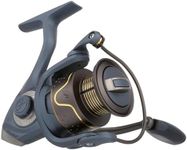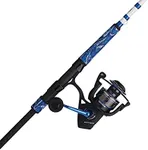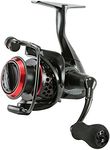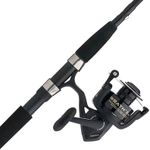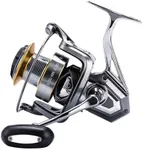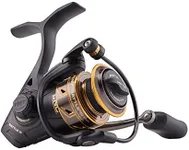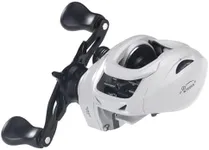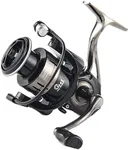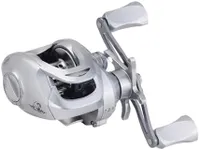Buying Guide for the Best Elite Spinning Reels
Choosing the right elite spinning reel can significantly enhance your fishing experience. The right reel will offer smooth operation, durability, and the ability to handle the type of fishing you plan to do. To make an informed decision, it's important to understand the key specifications and how they align with your needs. Here are the main specs to consider when selecting an elite spinning reel.Gear RatioThe gear ratio of a spinning reel indicates how many times the bail rotates around the spool with one turn of the handle. This is important because it affects the speed and power of your retrieve. A higher gear ratio (6:1 or higher) means faster retrieval, which is ideal for lures that require quick action. A lower gear ratio (4:1 or lower) provides more power and is better for reeling in larger fish. If you are targeting fast-moving fish or using techniques that require quick line retrieval, go for a higher gear ratio. For larger, stronger fish, a lower gear ratio will give you the necessary power.
Drag SystemThe drag system controls the amount of resistance a fish feels when it pulls on the line. This is crucial for preventing line breakage and ensuring you can tire out the fish without losing it. A smooth and reliable drag system is essential for handling strong fish. Look for reels with a high maximum drag rating if you plan to fish for larger species. For smaller fish, a lower drag rating will suffice. Ensure the drag system operates smoothly without jerking to avoid losing fish during the fight.
Ball BearingsBall bearings in a spinning reel reduce friction and provide smooth operation. The number of ball bearings can affect the reel's performance. More ball bearings generally mean smoother operation and better durability. Reels with 5 or more ball bearings are considered high-quality and offer a smoother experience. If you are looking for a reel that provides effortless casting and retrieval, opt for one with a higher number of ball bearings. However, for occasional fishing, a reel with fewer ball bearings may still perform adequately.
Line CapacityLine capacity refers to the amount of fishing line that the spool can hold. This is important because it determines how much line you can let out and how deep you can fish. Line capacity is usually indicated in yards for different line weights. If you plan to fish in deep waters or target species that make long runs, choose a reel with a higher line capacity. For shallow waters or smaller fish, a lower line capacity will be sufficient. Match the line capacity to the type of fishing you intend to do.
Reel SizeReel size is typically indicated by a number, such as 1000, 2500, or 4000, and it correlates with the reel's line capacity and overall size. This is important because it affects the balance of your fishing setup and the type of fish you can target. Smaller reels (1000-2500) are suitable for light fishing and smaller fish, while larger reels (3000-4000 and above) are better for bigger fish and heavier lines. Choose a reel size that matches your rod and the type of fishing you plan to do. A balanced setup will provide better performance and reduce fatigue.
Material and Build QualityThe material and build quality of a spinning reel affect its durability and weight. High-quality materials like aluminum, carbon fiber, and stainless steel offer better strength and corrosion resistance. This is important for ensuring the reel can withstand harsh conditions and last longer. If you fish in saltwater or challenging environments, opt for reels made from corrosion-resistant materials. For freshwater fishing, a well-built reel with good materials will still provide excellent performance. Consider the overall build quality to ensure you get a durable and reliable reel.
